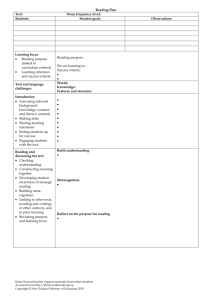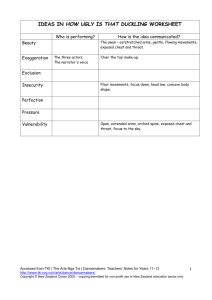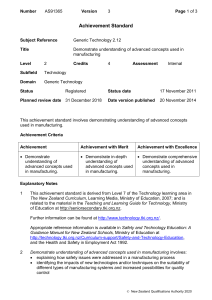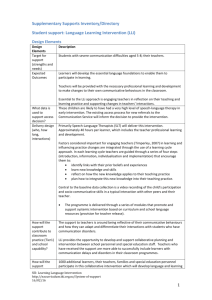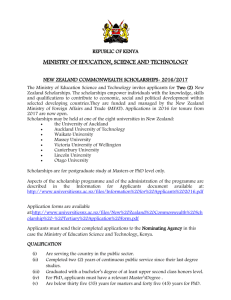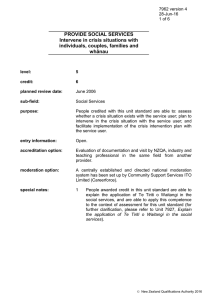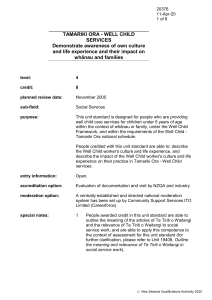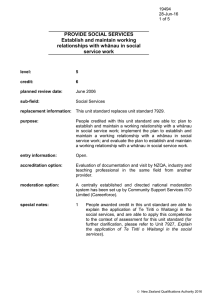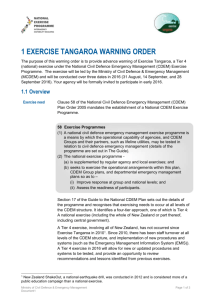Definitions of achievement for National Standards - Assessment
advertisement
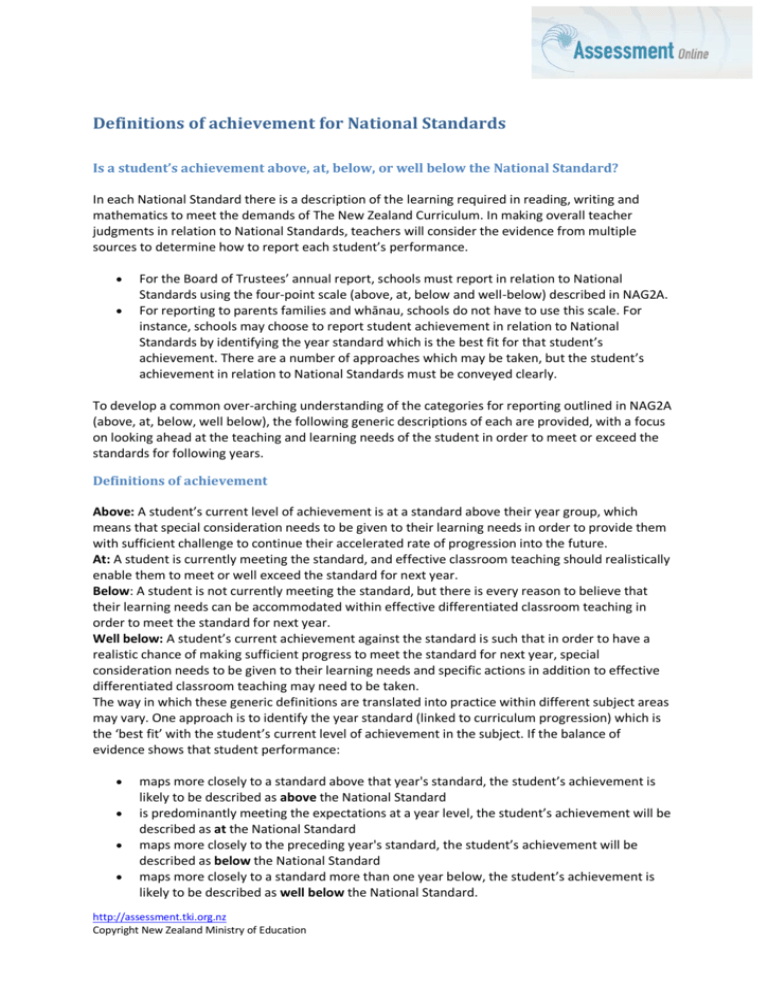
Definitions of achievement for National Standards Is a student’s achievement above, at, below, or well below the National Standard? In each National Standard there is a description of the learning required in reading, writing and mathematics to meet the demands of The New Zealand Curriculum. In making overall teacher judgments in relation to National Standards, teachers will consider the evidence from multiple sources to determine how to report each student’s performance. For the Board of Trustees’ annual report, schools must report in relation to National Standards using the four-point scale (above, at, below and well-below) described in NAG2A. For reporting to parents families and whānau, schools do not have to use this scale. For instance, schools may choose to report student achievement in relation to National Standards by identifying the year standard which is the best fit for that student’s achievement. There are a number of approaches which may be taken, but the student’s achievement in relation to National Standards must be conveyed clearly. To develop a common over-arching understanding of the categories for reporting outlined in NAG2A (above, at, below, well below), the following generic descriptions of each are provided, with a focus on looking ahead at the teaching and learning needs of the student in order to meet or exceed the standards for following years. Definitions of achievement Above: A student’s current level of achievement is at a standard above their year group, which means that special consideration needs to be given to their learning needs in order to provide them with sufficient challenge to continue their accelerated rate of progression into the future. At: A student is currently meeting the standard, and effective classroom teaching should realistically enable them to meet or well exceed the standard for next year. Below: A student is not currently meeting the standard, but there is every reason to believe that their learning needs can be accommodated within effective differentiated classroom teaching in order to meet the standard for next year. Well below: A student’s current achievement against the standard is such that in order to have a realistic chance of making sufficient progress to meet the standard for next year, special consideration needs to be given to their learning needs and specific actions in addition to effective differentiated classroom teaching may need to be taken. The way in which these generic definitions are translated into practice within different subject areas may vary. One approach is to identify the year standard (linked to curriculum progression) which is the ‘best fit’ with the student’s current level of achievement in the subject. If the balance of evidence shows that student performance: maps more closely to a standard above that year's standard, the student’s achievement is likely to be described as above the National Standard is predominantly meeting the expectations at a year level, the student’s achievement will be described as at the National Standard maps more closely to the preceding year's standard, the student’s achievement will be described as below the National Standard maps more closely to a standard more than one year below, the student’s achievement is likely to be described as well below the National Standard. http://assessment.tki.org.nz Copyright New Zealand Ministry of Education Students who are well below the expected standard may require modified classroom programmes and extra support to continue their development and maintain positive attitudes. In order to make a judgment from the balance of evidence, a range of sources will need to be considered, including classroom observation against clear criteria, demonstrated behaviour on texts and tasks and the information from student performance on assessment activities. Determining ‘at risk’ students Overall teacher judgments (OTJs) in relation to National Standards can help teachers to identify students who are ‘at risk’. Students may be identified as being at risk if they are achieving 'well below' a standard or are improving at considerably less than the expected rate of progress. Students who are identified as at risk may need additional support beyond a classroom programme. English language learners (ELL) English language learners (ELL) may be considered differently in relation to National Standards. Their progress and achievement may be monitored in relation to the English Language Learning Progressions (ELLP) as long as the students meet the criteria in the Ministry Guidelines . At all times the relationship with the National Standards should be kept in view. These students will be working either well below or below the National Standard. There is a risk of having different sets of expectations for different groups of students if the national expectations are not kept clearly in view. The ELLP guidelines strike a balance between acknowledging the needs of English language learners when they are in the early stages of English language acquisition, and the need for them to be on track towards achieving at national expectations. Using the ELLP will enable teachers to report progress towards reaching the level of the students’ native-English-speaking peers. The Progressions will also help to determine the next teaching steps and explain to students’ parents, families and whānau how they can help their child’s learning. Further specific information for reporting achievement in reading, writing and mathematics for these students is reported in the corresponding National Standards material. Students with very significant learning disabilities A very small number of students have very significant learning disabilities. This group of students are likely to (or expected to) learn long-term within Level 1 of the New Zealand Curriculum and will be receiving support through the Ongoing and Reviewable Resourcing Schemes (ORRS) or accessing Supplementary Learning Support (SLS) support. The progress these children make will be assessed in relation to the standards as part of the regular review of their learning that takes place through their Individual Education Programmes (IEPs) and processes, which are agreed in consultation with parents, families and whānau, teachers and the Ministry. http://assessment.tki.org.nz Copyright New Zealand Ministry of Education
